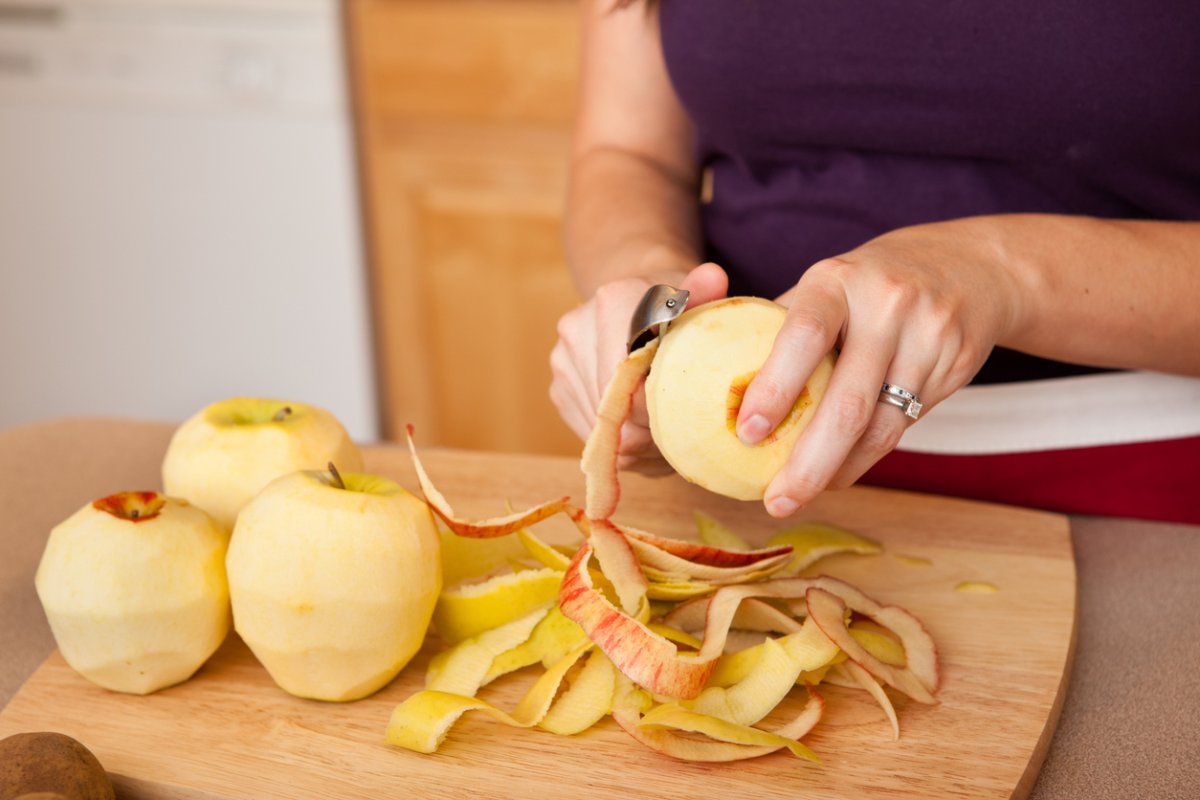Hooray! You Pumpkin-Spice-latte’d your way through your own apple trees and/or every apple orchard in town and found yourself barricaded in your kitchen with no less than 20 pounds of apples. You already baked everything in your recipe book and your family can’t eat another apple pie, crumble, sauce, or turnover. You’ve given away apples to neighbors, mail carriers, random people walking their dog by your house. There are still apples in your kitchen. The time has come to accept your fate of freezing fresh apples.
Freezing fresh fruits and vegetables is a great way to enjoy locally grown food all year round. It’s important to know that the texture of apples changes after freezing and thawing. Because of this, freezing fresh apples for baking is my favorite use. Here is the easiest way to freeze your apples and enjoy them all year long.
Discover 7 top tips for growing, harvesting, and enjoying tomatoes from your home garden—when you access the FREE guide The Best Way to Grow Tomatoes, right now!
Peel, core, and cut
You don’t have to peel your apples. For instance, if you plan to use them in smoothies, leaving the peels on can add good fiber and nutrients and won’t affect the recipe since it’s getting pulverized. I like to peel mine so I have options. (And I add the scraps to my compost pile!)
You can cube up your apples or slice depending on how you think you’ll use them in the future. Cubes are great for smoothies, baking, and applesauce. Slices are good for pies and some other baked recipes. If you’re not sure what you’ll be using them for, I recommend freezing fresh apples in both cubes and slices.
Soak
Soak your sliced or cubed apples for five minutes in water with about two tablespoons of lemon juice. This step is optional but I find it helps prevent my apples from turning brown.
Flash Freeze
Arrange your apples on a parchment-lined baking sheet and freeze for at least four hours. Try to space out the apples so they’re not touching too much. This will prevent your apples from freezing in a large clump and allow you to portion out your apples for later use.
Important Prep Tip: Check to make sure your baking sheet will fit in your freezer beforehand! My freezer is laughably narrow, so I make this mistake often. It’s easier to shuffle around frozen meats and veggies in your freezer without juggling a baking sheet filled with apples.
Transfer to a freezer bag, label, and date
Freezing fresh apples will stay good up to a year, though I find the six-month mark is when the flavor starts to go and they start becoming more ice than apples. In most recipes, you won’t have to thaw your apples before cooking. Though, you may need to adjust your bake time.
Wait, can I freeze a whole apple?
I purposely put this at the end of the article. Technically freezing fresh apples whole is the “easiest” way, however, it comes at a cost. Yes, you can freeze apples whole. This saves a little time up front, because other than washing your apples, you’re just putting them in the freezer. But, you’ll end up spending more time on the back-end peeling and coring. And it’ll be trickier because the texture will be mushier. If it’s your only option due to time constrictions, it is still worth freezing fresh apples using this method. Not all fruits work though, I’ve done the “freeze whole” thing here and there when I’ve realized last minute before vacation that I had a drawer of peaches shipped in from Georgia (yeah, that’s how I roll), or some very coveted persimmons waiting for jam—and froze them in a panic. Let’s just say they never amounted to anything—one star, do not recommend.
Thawing frozen apples
Like all things, what gets frozen must be defrosted, and that usually means retained water. If you’re making something like apple pie, that means you’ll probably want to defrost and strain the apples first, and still use extra wheat or arrowroot flour to thicken it. That’s really the biggest challenge you’ll face.
What do you think of freezing fresh apples? What delicious recipes have you used frozen apples in? Let me know in the comments!

5 replies on “The Easiest Method for Freezing Fresh Apples for Baking”
Question…how much H20 to the 2 tblspoons of lemon juice to ward off brown?
Freezing apples for pie: Line a pie plate with aluminum foil leaving enough to fold over to completely cover. Slice and spice, arrange apples just like that foil was your crust. Cover with wrap, freeze. When frozen remove from pie plate. When ready to bake, remove from freezer, remove foil, place in crust and bake. Carole
Wow, thanks, great idea!
I never think about freezing fruits, apples and I will try, really sounds easy.
Have you recepie for the strawberries and other fruits????????????????????????????????
Strawberries, blueberries, etc. are super easy to freeze. I core the strawberries (after washing & gently drying them on a clean towel or paper towels) and lay them out on the cookie sheet lined with parchment. Once frozen, bag them in a ziploc, removing as much air as possible. Same idea with blueberries!